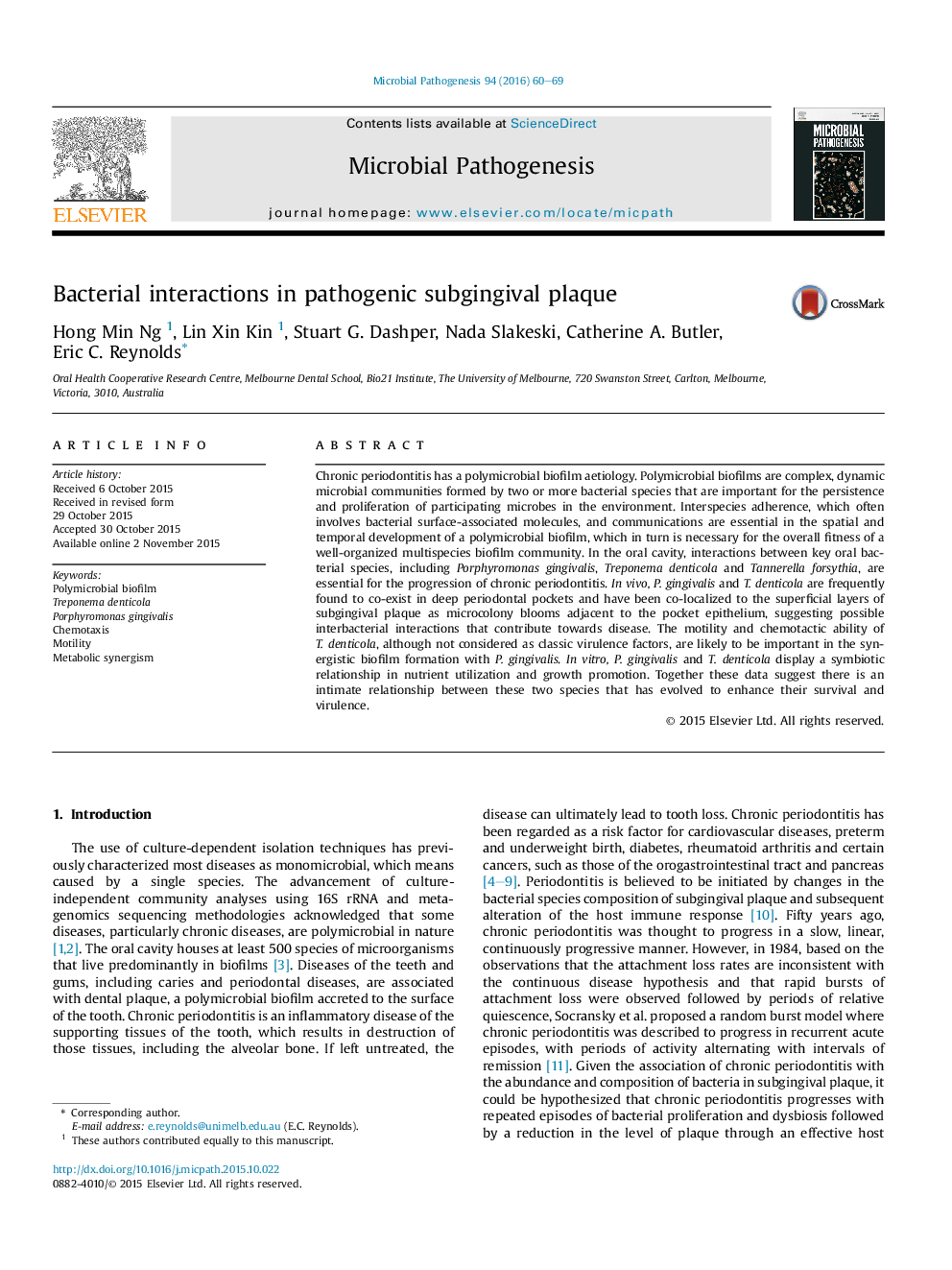| Article ID | Journal | Published Year | Pages | File Type |
|---|---|---|---|---|
| 3416343 | Microbial Pathogenesis | 2016 | 10 Pages |
•Chronic periodontitis is associated with a polymicrobial biofilm.•Interspecies adherence and signaling are important for biofilm development.•Metabolic interactions are common between oral bacteria in polymicrobial biofilms.•P. gingivalis and T. denticola together show enhanced growth and virulence.•T. denticola motility and chemotaxis are involved in synergistic biofilm formation.
Chronic periodontitis has a polymicrobial biofilm aetiology. Polymicrobial biofilms are complex, dynamic microbial communities formed by two or more bacterial species that are important for the persistence and proliferation of participating microbes in the environment. Interspecies adherence, which often involves bacterial surface-associated molecules, and communications are essential in the spatial and temporal development of a polymicrobial biofilm, which in turn is necessary for the overall fitness of a well-organized multispecies biofilm community. In the oral cavity, interactions between key oral bacterial species, including Porphyromonas gingivalis, Treponema denticola and Tannerella forsythia, are essential for the progression of chronic periodontitis. In vivo, P. gingivalis and T. denticola are frequently found to co-exist in deep periodontal pockets and have been co-localized to the superficial layers of subgingival plaque as microcolony blooms adjacent to the pocket epithelium, suggesting possible interbacterial interactions that contribute towards disease. The motility and chemotactic ability of T. denticola, although not considered as classic virulence factors, are likely to be important in the synergistic biofilm formation with P. gingivalis. In vitro, P. gingivalis and T. denticola display a symbiotic relationship in nutrient utilization and growth promotion. Together these data suggest there is an intimate relationship between these two species that has evolved to enhance their survival and virulence.
